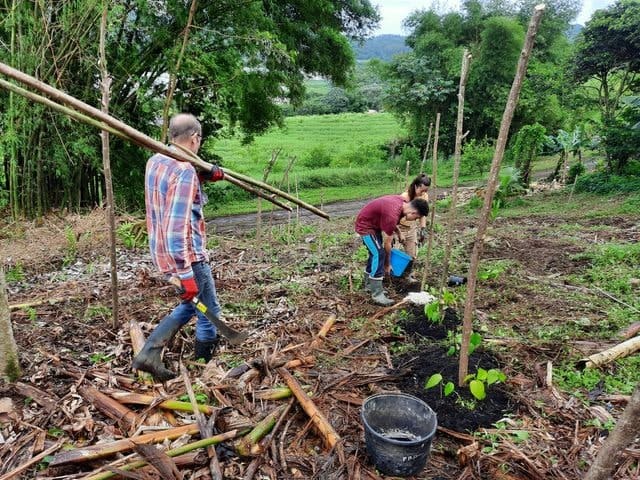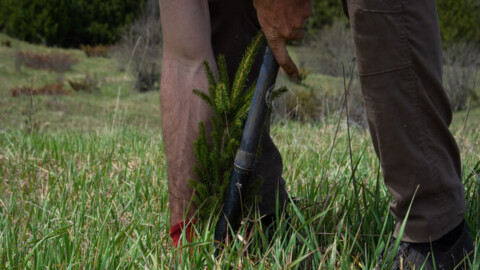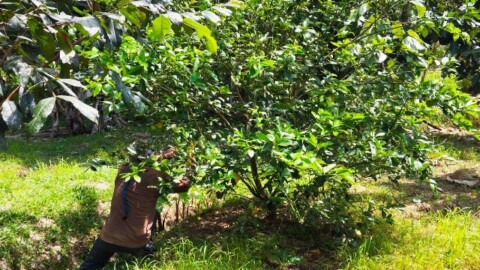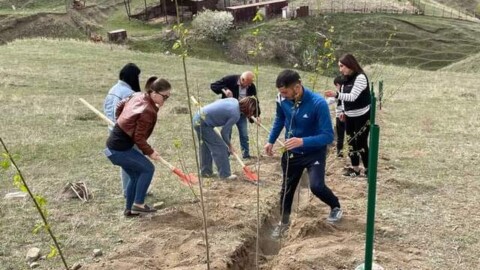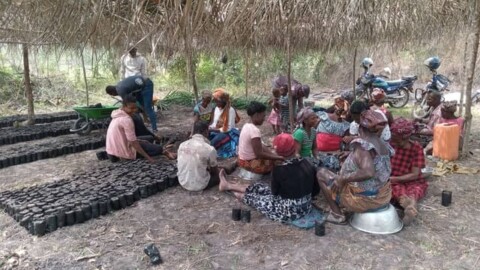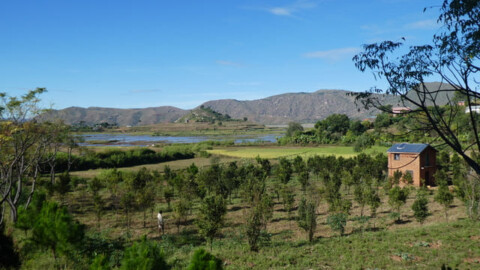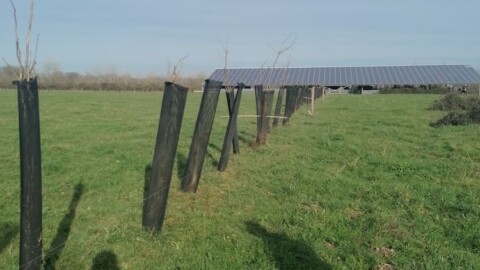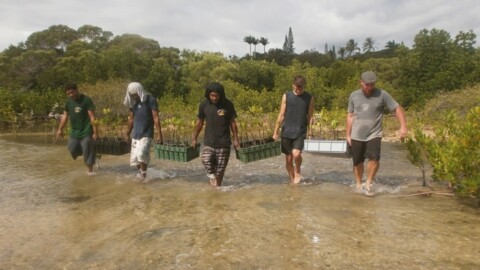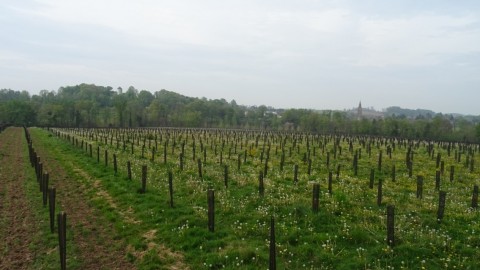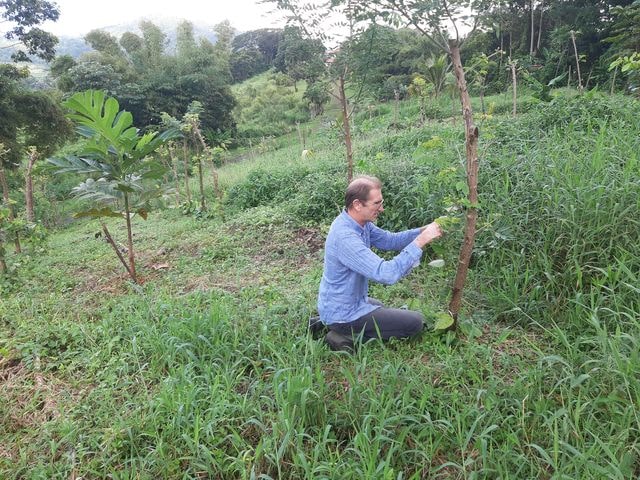
Martinique, France, June 2022
This project is supporting Arnaud and Sébastien, two farmers on the island of Martinique who aim to plant 6,450 trees of 34 different species on plots of land previously used for intensive banana cultivation, and which are polluted with chlordecone.
The project will run over several years and so involve several planting phases. It started in May 2021 on plots where coconuts and cocoa trees will grow with the newly planted trees. A total of 881 trees of 10 different species were planted between May and November 2021.
Planting is now complete on these cocoa and coconut plots and a further 499 trees were planted from Christmas 2021 to February 2022 – bringing the total number of trees planted on these plots to 1,380 trees of 22 different species. Arnaud and Sébastien still have some work to do and have continued planting during spring 2022.
Follow-up of the first plantations was carried out in early December 2021. The results are encouraging: the trees on the ‘coconut’ plot are thriving and most of them have grown extremely well. The almond, breadfruit and gliricidia trees have adapted very well to the plot and grown on average from 1 to 2.2 metres! Only a few gliricidia and simarouba failed to survive because of drought. They have already been replaced!
On the cocoa plot, the trees have also developed well: the mombin and citharexylum fruit trees have grown from 1 to 1.2 metres, while the gliricidia trees have grown 180cm. The latter are atmospheric nitrogen-fixing trees, capable of capturing this element scarce in the tropical soils of the farm. So this species of tree is very well adapted to the tropical context and grow quickly. The branches of these trees will be regularly pruned to make stakes to be used for the next plantations. The cocoa trees are now well rooted and starting to grow, even though this growth is proving quite slow. Some trees did not survive the dry season but were soon replaced.
Overall, only drought hinders these plantations. Very little damage from game, insects, or other pests has been reported. Furthermore, the plot is maintained every month to control weeds and lianas that could compete with the trees. Mulch, a mix of self-generated wood chips and organic compost, was laid down around the base of each tree at the beginning of the dry season in February/March 2022. This helps control weed growth and retain water in the soil – thus boosting the tree survival rate.
The next phase of work, such as further planting, weeding, and mulching, continued during spring 2022.
Thanks to a plantation monitoring software, farmers can better monitor and plan their tasks. A local technical structure accompanied the farmers for a day in order to make field observations, assess technical areas with room for improvement, and plan future work needed.
Arnaud and Sébastien are delighted with the good recovery of the trees and their rapid development. The fruit trees will bear their first fruit in four to five years and the forest trees will provide shady – and cooling – cover.


